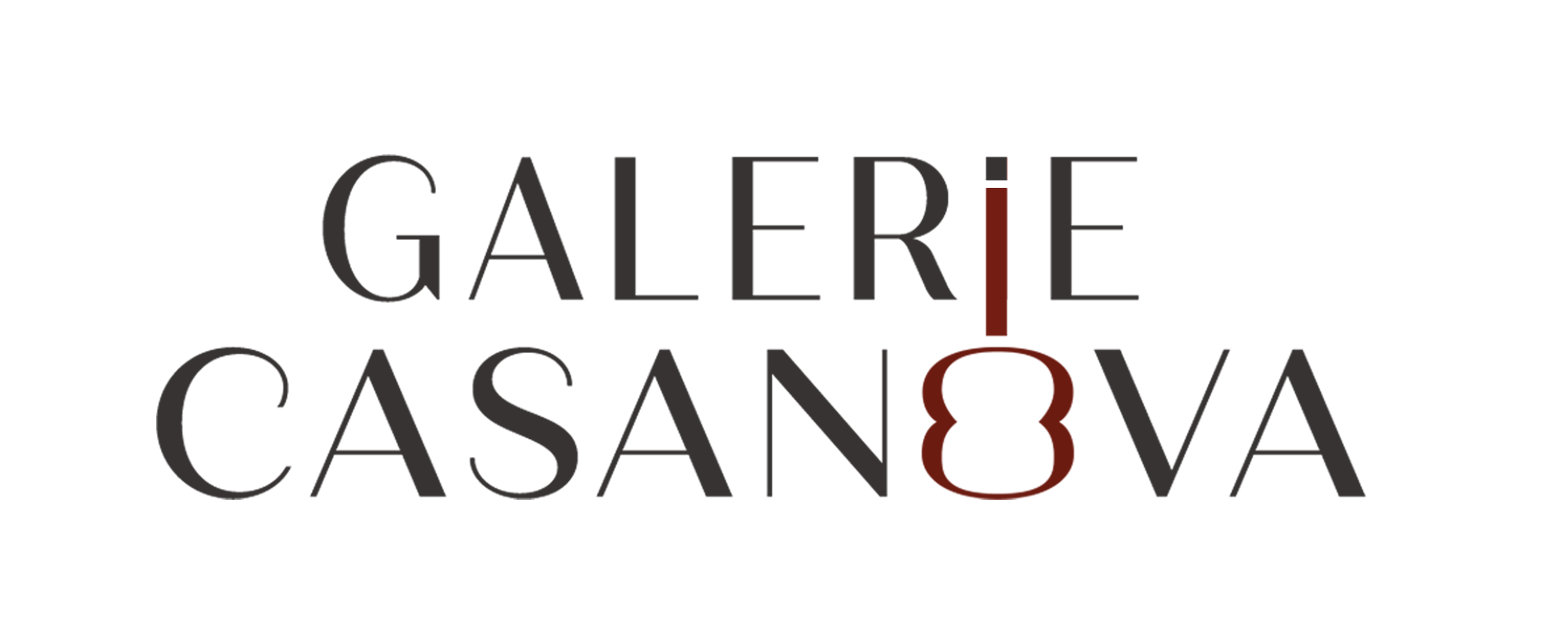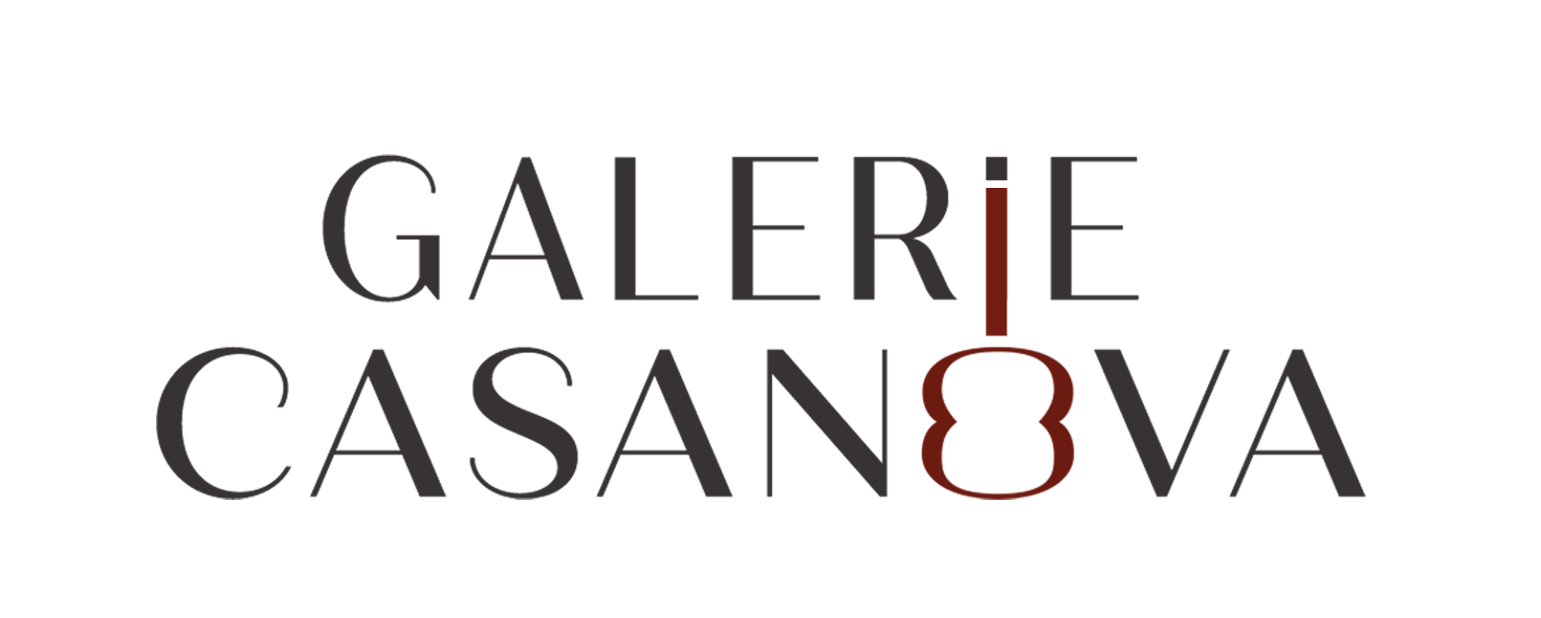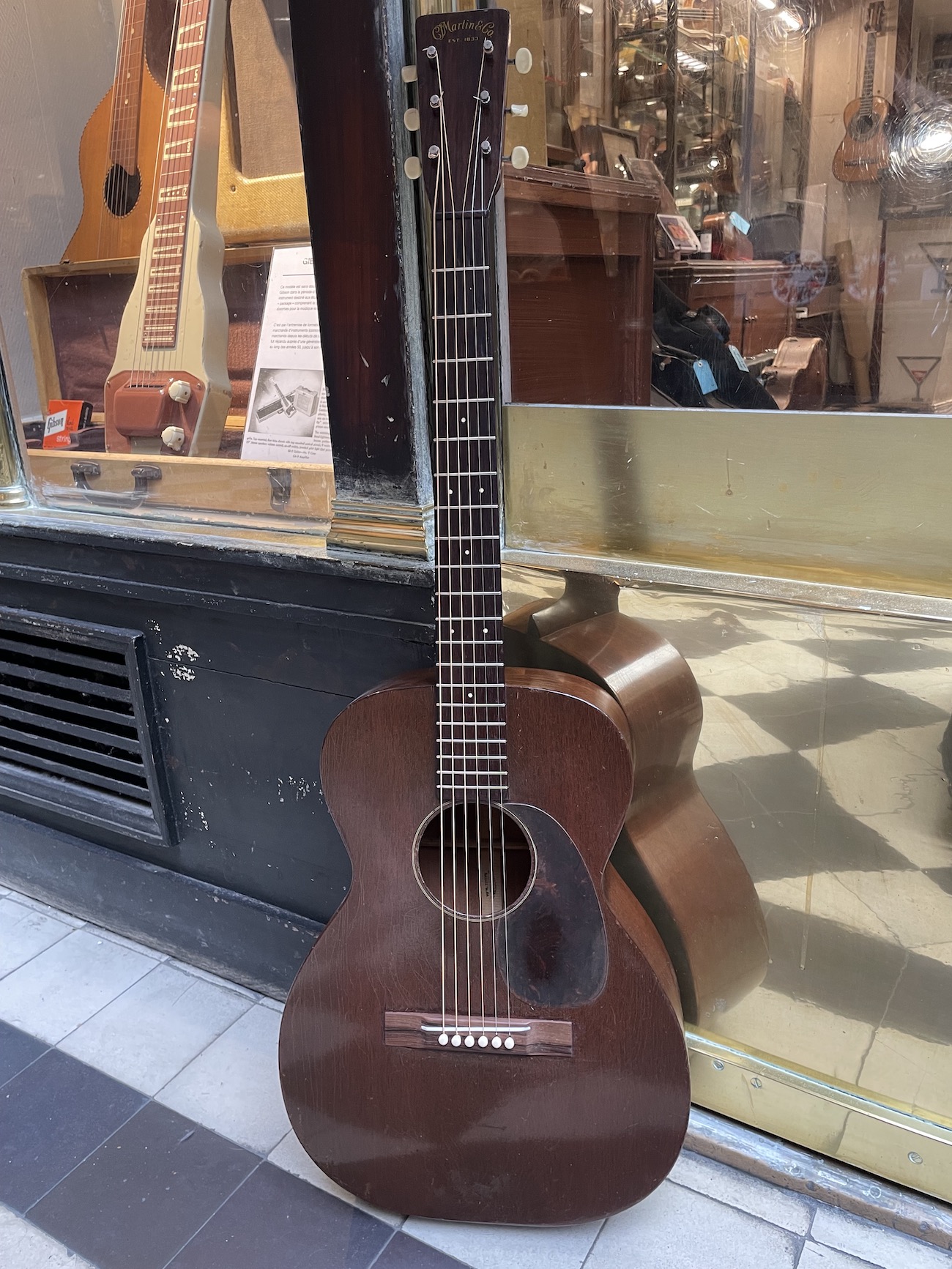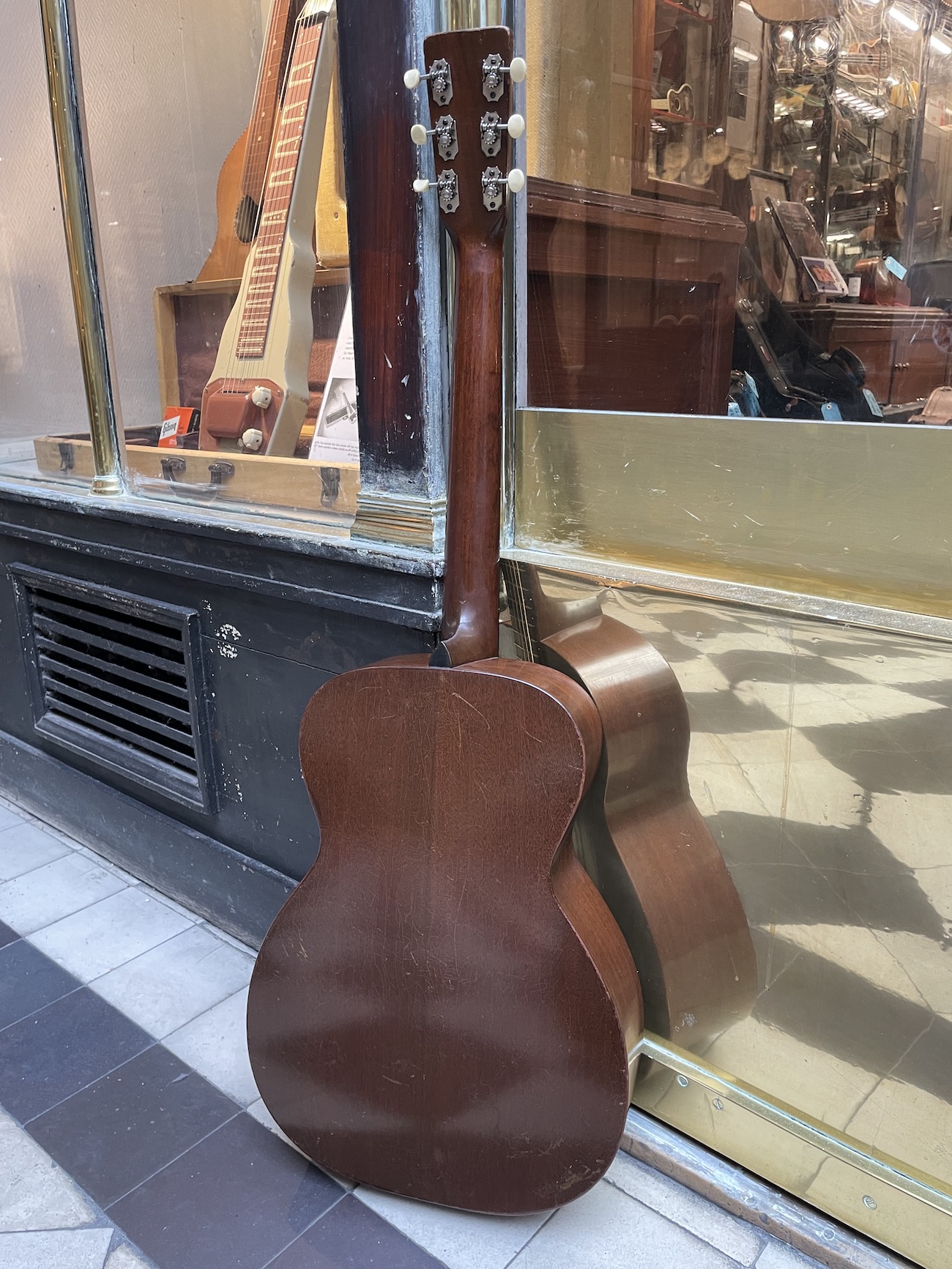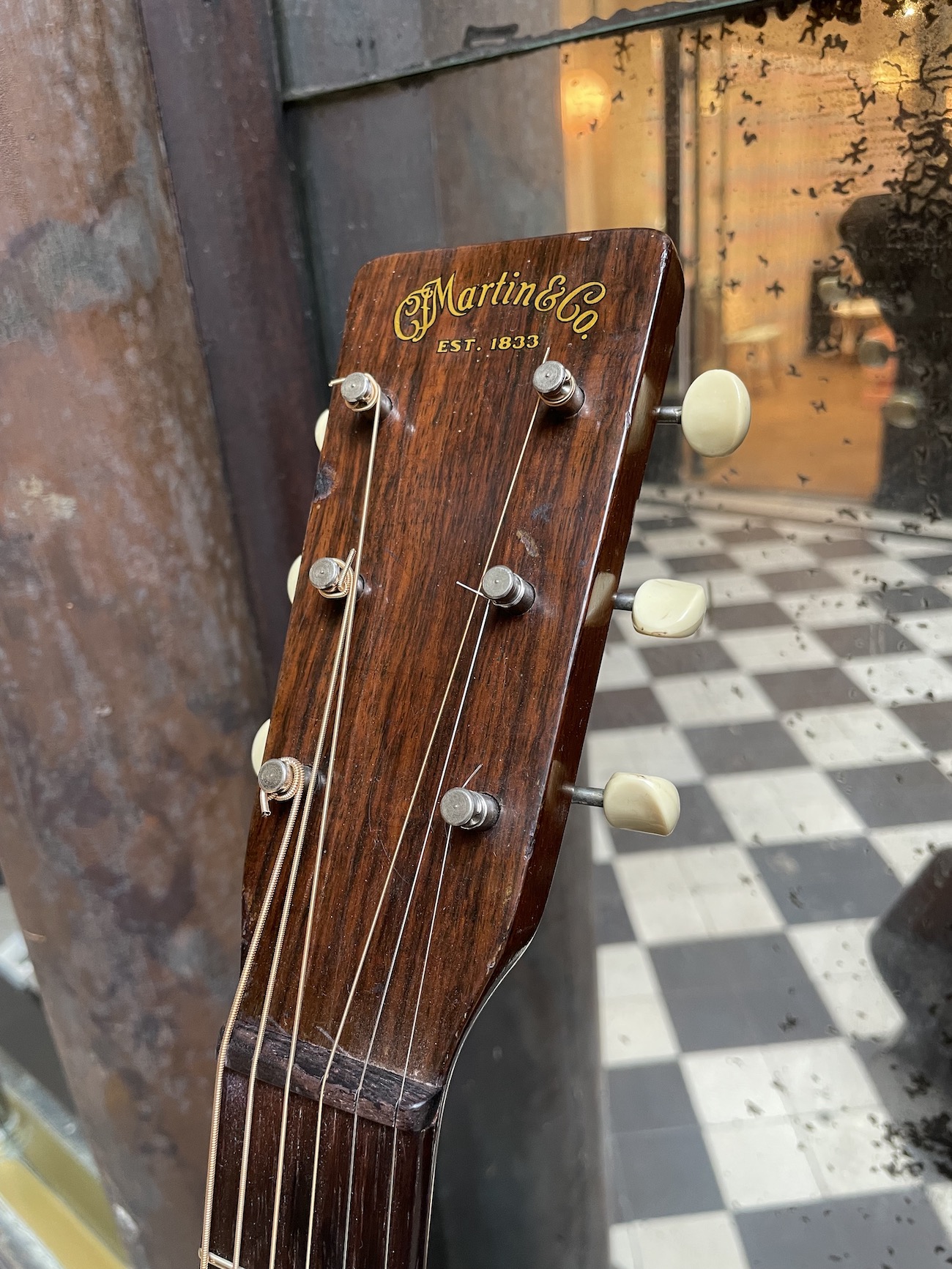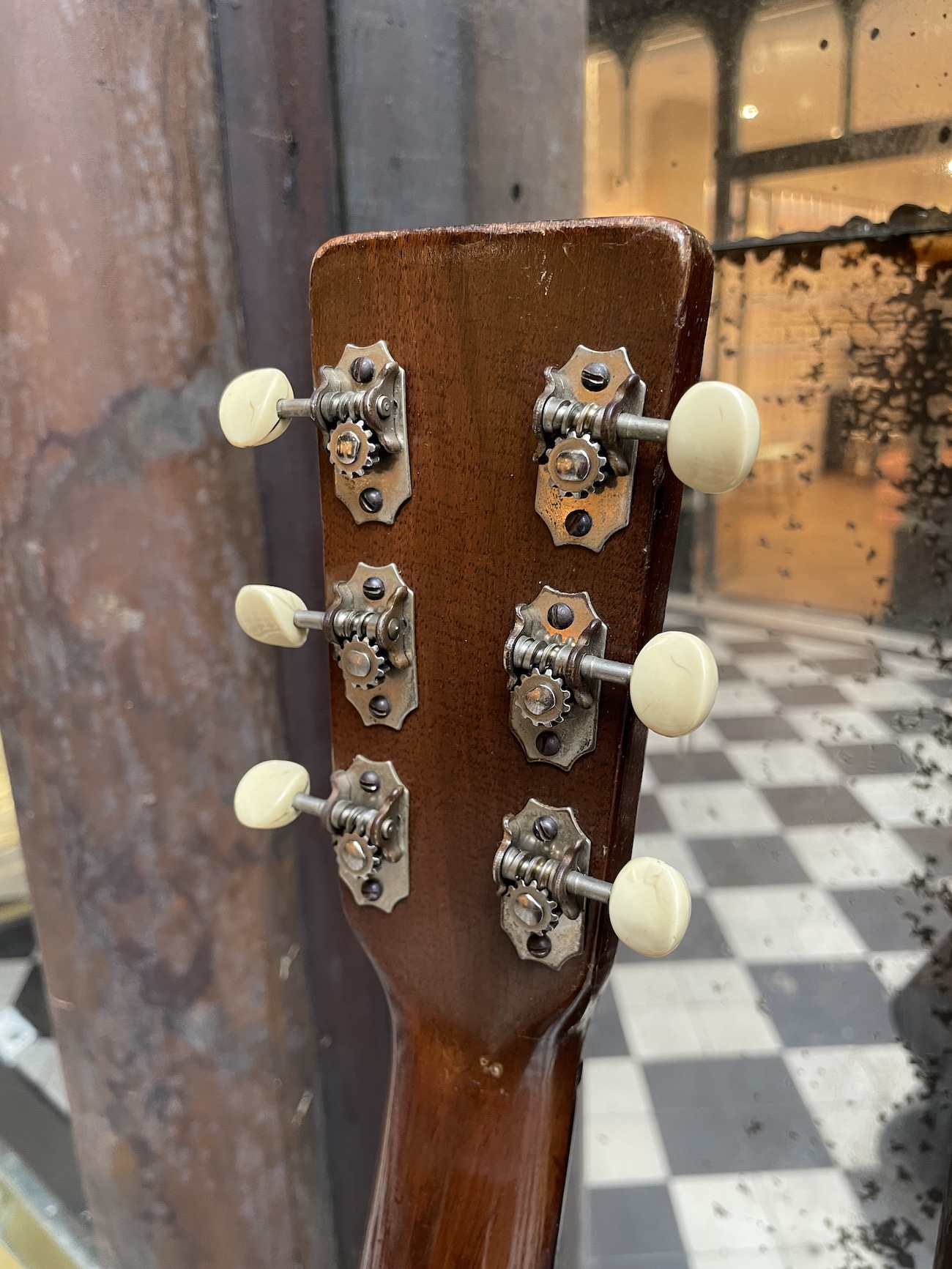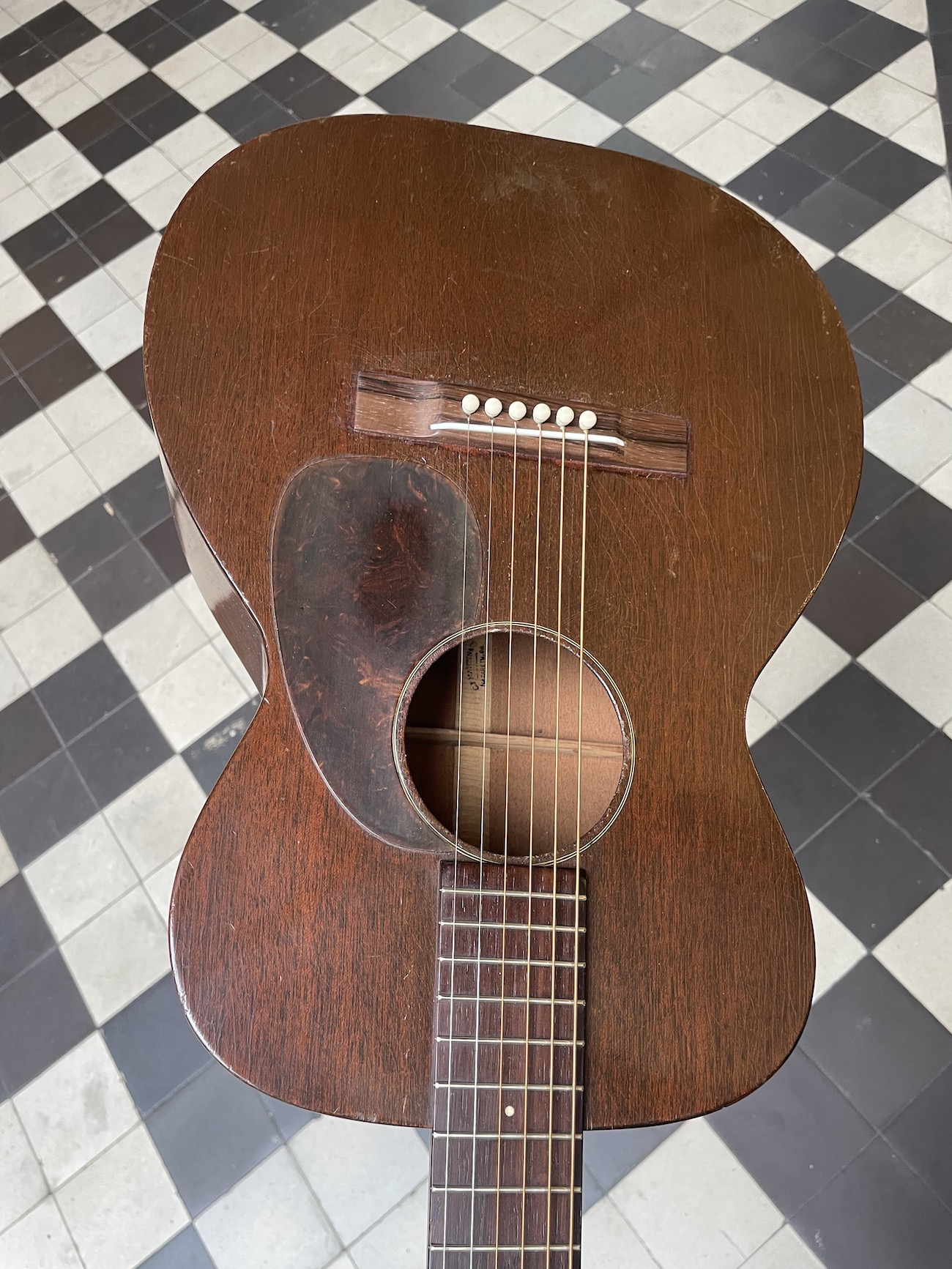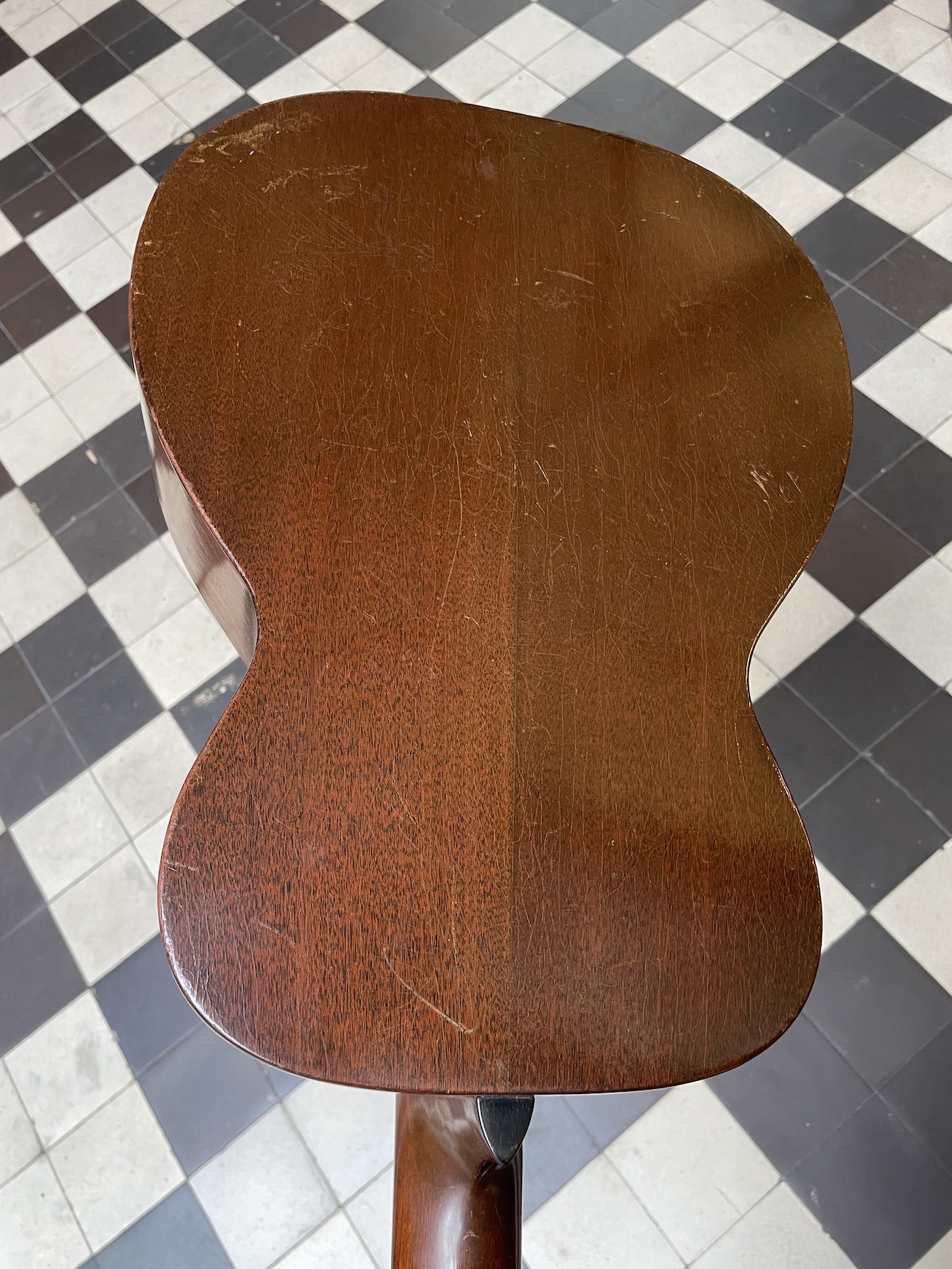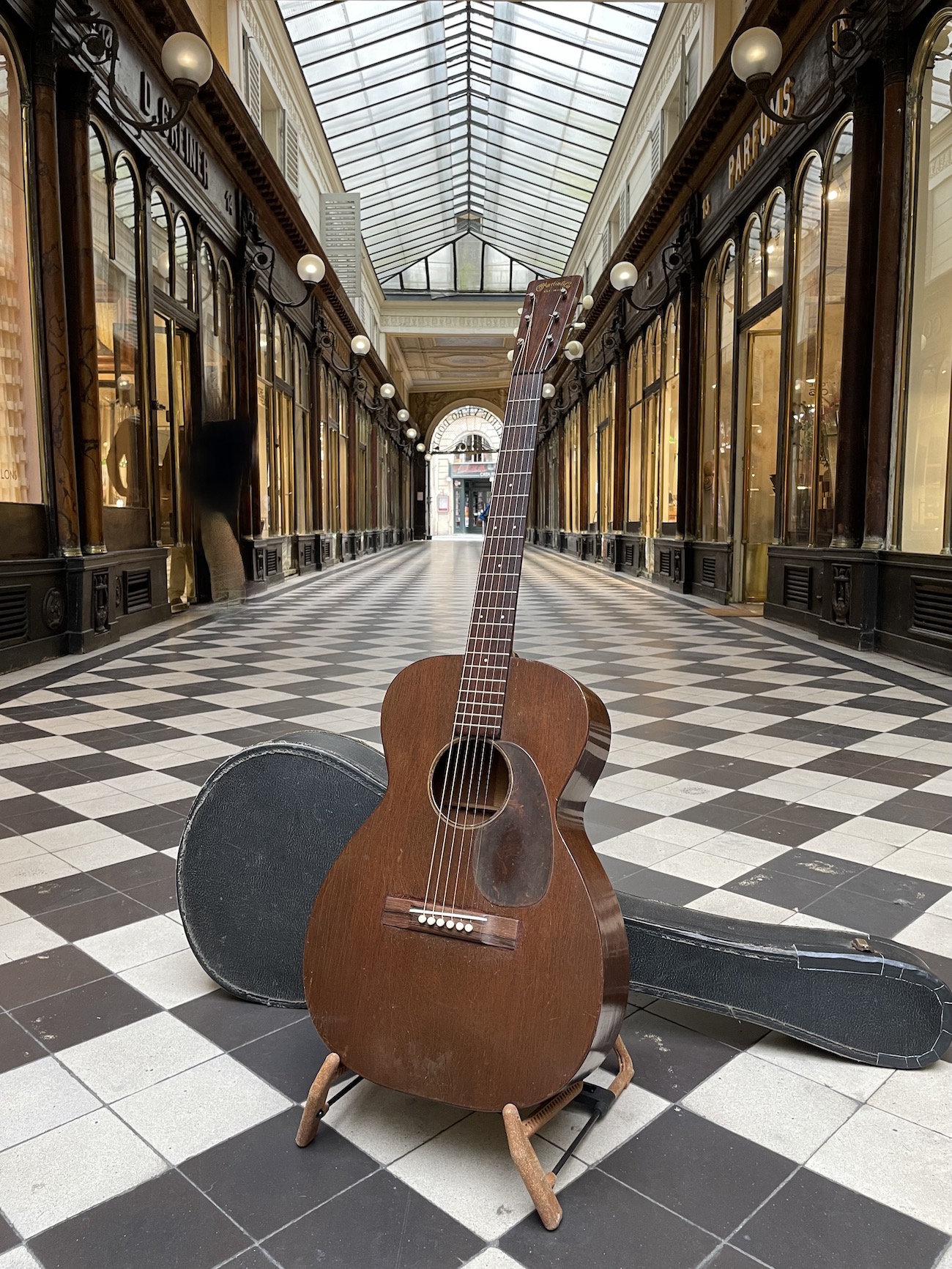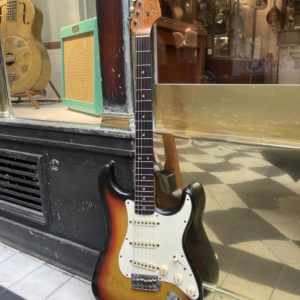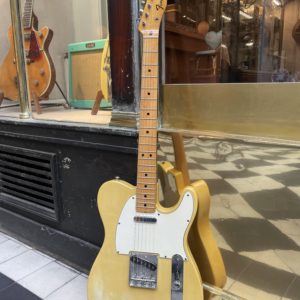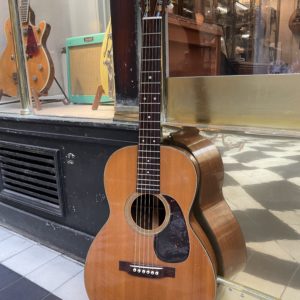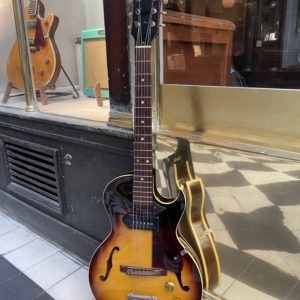1945 MARTIN 0-17
The prices indicated correspond to the price in the case of payment in-store or by bank transfer. In the case of payment by credit card via the website, a processing fee of [3.25% + €0.25]* will be applied to the total amount of the basket, including delivery costs.
A beautiful and rare Martin 0-17 from 1945, in very good condition.
Built in the last months of the Second World War, this small all-mahogany model constituted at the time of its manufacture the bulk of the production of size 0 guitars for C. F. Martin: due to wartime austerity, the company had chosen to favor its models that were the most sparing in terms of construction like this all-mahogany guitar, devoid of finishing appointments and built with minimal thicknesses of wood and varnish. The result is an extremely light and sonorous instrument, and although late-period, which still fits perfectly into the Golden Age of Martin flat-top guitars.
Several points concerning the construction of the guitar are very specific to the instruments produced at the end of 1944 and the beginning of 1945 which make them of particular interest to anyone attached to the Martins in their historicity. Firstly, the bracing presents a construction that can be said to be transitional, between scalloped bracing and later-period straight bracing, that is to say heavier braces not employing the crest-shaped carving on their top to reduce their weight. From the end of 1944, the bracings were no longer scalloped, but nevertheless had a rounded profile at the ends making them lighter than those that followed – this construction is known as tapered bracing. The records established by Martin foreman John Deichman make it possible to determine the first batch of instruments built according to this characteristic as being that of December 6, 1944. The instrument presented here having been manufactured only two months later, it is therefore among the very first Martins to include a tapered bracing – note that the shape of this bracing will evolve, losing its rounded profile during the second half of the 1940s, and becoming increasingly heavier over the following decades.
Another point of importance, the guitar has a steel neck reinforcement rod, denoted T-bar, present on Martin guitars since 1934 and the introduction of T-frets, which did not offer the same stiffening characteristic as the bar frets previously used, hence the need for more robust neck reinforcement. Supplied exclusively to Martin by Ralph W. Fry, a manufacturer specializing in materials for industry and agriculture, the T-bars were hit by the restrictions that affected all industries using steel during the Second World War, and Martin were thus forced for a time to return to the ebony reinforcement bars used before 1934. They nevertheless managed to obtain a supply of steel bars for around ten months between 1944 and 1945, which they installed on the guitars produced in this period of time.
Otherwise, this almost 80-year-old guitar comes to us in superb condition, although bearing the marks of many decades of use: note, the rosewood bridge has been replaced, and bears the traces of a left-handed conversion which was reversed since. We also notice traces of filled holes on the bottom of the sides indicating the previous installation of a tailpiece, as well as a repair of the top around the pickguard. The guitar has a low action, fair intonation, the neck has a slightly V-shaped profile and is perfectly comfortable. Appraised and prepared in our workshop, equipped with its original Kluson 502N tuners, in its original Martin case.
SOLD
